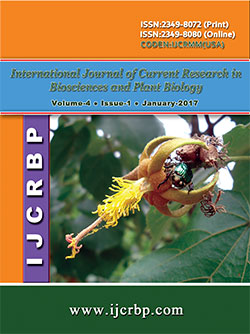 |
Online ISSN : 2349-8080 Issues : 12 per year Publisher : Excellent Publishers Email : editorinchiefijcrbp@gmail.com |
Our interactions with plants and animals go back to prehistoric days when early man used his wits to survive in a hostile environment. First and foremost, he had to feed himself and his family. He had to distinguish which plants were safe to eat from those that were non-edible and poisonous. The behaviour of animals naturally provided many hints. However, what is edible to an animal is not necessarily safe for humans. Thus early man probably tried the non-edible and the poisonous in his quest for food and also encountered plants that caused strange and wonderful sensations, sometimes accompanied by colourful visions. By trial and error he learned which plants were palatable and edible. These were eaten either raw or cooked. Those that were poisonous or caused undesirable and strange reactions were avoided. As his familiarity with plants increased, he naturally identified those that could sooth or heal wounds and those that could cure illnesses. Eighteen families were found to be represented by twenty six genera of twenty nine plant species with wild fruits. Moraceae and Rutaceae were found to be represented by three genera and four families and three gemera and three species respectively. Anacardiaceae, Caesalpinaceae, Myrtaceae and Sapotaceae with two genera and two species each. Capparidaceae, Flacourtiaceae, Bombacaceae, Averrhoaceae, Rhamnaceae, Trapaceae, Passifloraceae, Ebenaceae, Verbinaceae and Euphorbiaceae with single genera and species each. Combretaceae and Apocynaceae were represented by single genera and two species each. The genus Terminalia, Carrisa and Ficus were represented by two species each.
